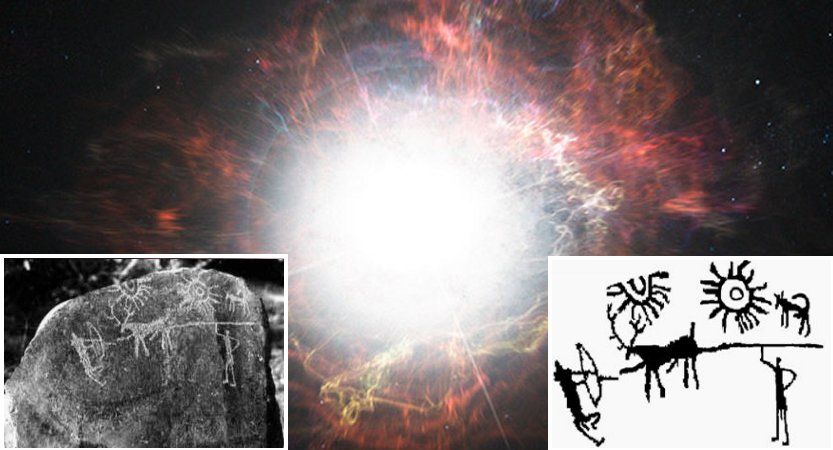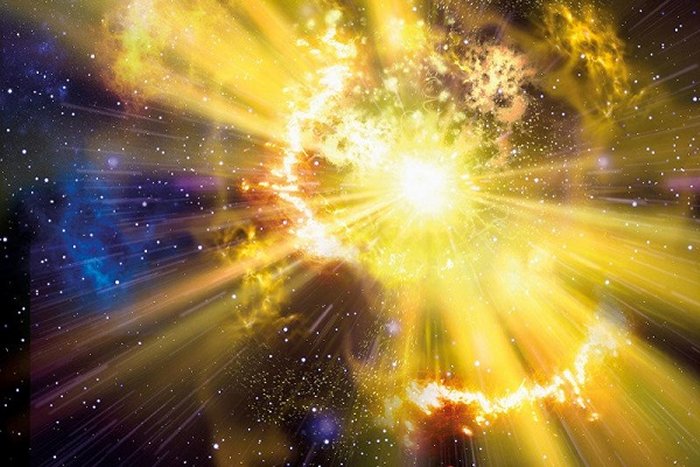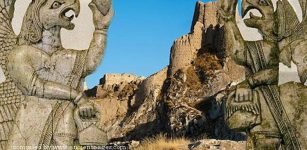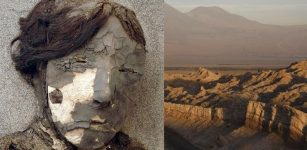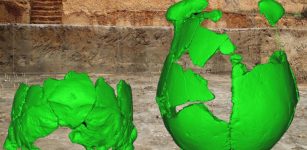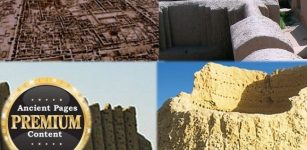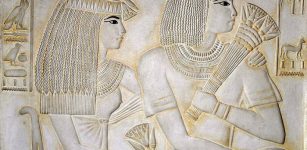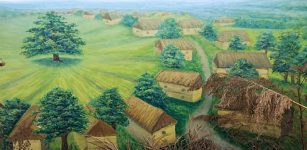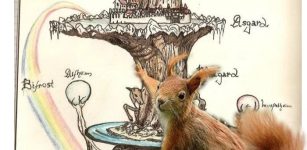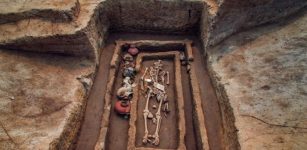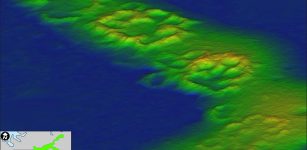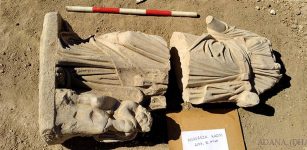Extraordinary 5,000-Year-Old Astronomical Event Depicted On Indian Rock Carving
A. Sutherland- AncientPages.com - A fascinating ancient rock carving in India depicts two very bright objects visible in the sky. When scientists examined the carving they soon understood our ancestors witnessed something extraordinary in the skies 5,000-years ago.
What were these two mysterious celestial objects with rays of light coming out of them? The ancient rock carving found in the Burzahama region in Kashmir, India depicts these two bright objects and figures of animals and humans underneath. This scene has been interpreted as either the Sun and the Moon or two bright stars in close proximity, but what if it was something entirely different?
Astrophysicist Mayank Vahia and his colleagues at the Tata Institute of Fundamental Research in India examined the rock carving and draw the conclusions our ancestors witnessed an extraordinary astronomical event in the sky about 5,000 years ago. The rock carving depicts the world’s oldest recorded supernova and star chart.
Photograph of stone Carving from Burzahom (Courtesy IGNCA) along with a sketch of the same.
In their science paper, the researchers write “We search the supernova catalogue to look for a possible supernova that could have had the brightness comparable to that of Sun or Moon and close to ecliptic between 2000 BC and 10,000 BC since the etching is believed to have been done prior to 2000 BC and be visible from Burzahama. Only one Supernova remnant HB9 satisfies this condition. In addition to being dated to 4,600 BC, its apparent magnitude at peak must have been close to that of the Moon.
Astronomers in India believe that observations of a supernova that exploded thousands of years ago were carved in rock.
We then plot this object in the sky along with the rest of the scene and show that the whole hunting scene along with the Moon and the Supernova fits quite well into the pattern of stars in the sky. Thus we suggest that this is probably the oldest record of supernova and sky chart found in the Indian Subcontinent.”
Skymap of the region of HB9 in the sky chart for 5700 BC. To facilitate easy comparison with the drawing, rough patterns are drawn in the map. The constellation names as per current identification are given. The big spot at the center is the full Moon in the month of August in roughly 4500 BC, and the circle on the right indicates the position of HB9. Credit: Vahiya et al
In the carving, one of the bright lights would represent this supernova and the other the full moon. The rest of the carving is also an astronomical record. “That theory argues that it doesn't simply show a hunting scene, it shows the celestial hunting scene formed by the constellations Taurus, the bull, and Orion, the hunter.
The carving would be the first example of such a star chart in the area—if it isn't simply a celestial coincidence, “researchers wrote in their paper.
Written by - A. Sutherland - AncientPages.com

